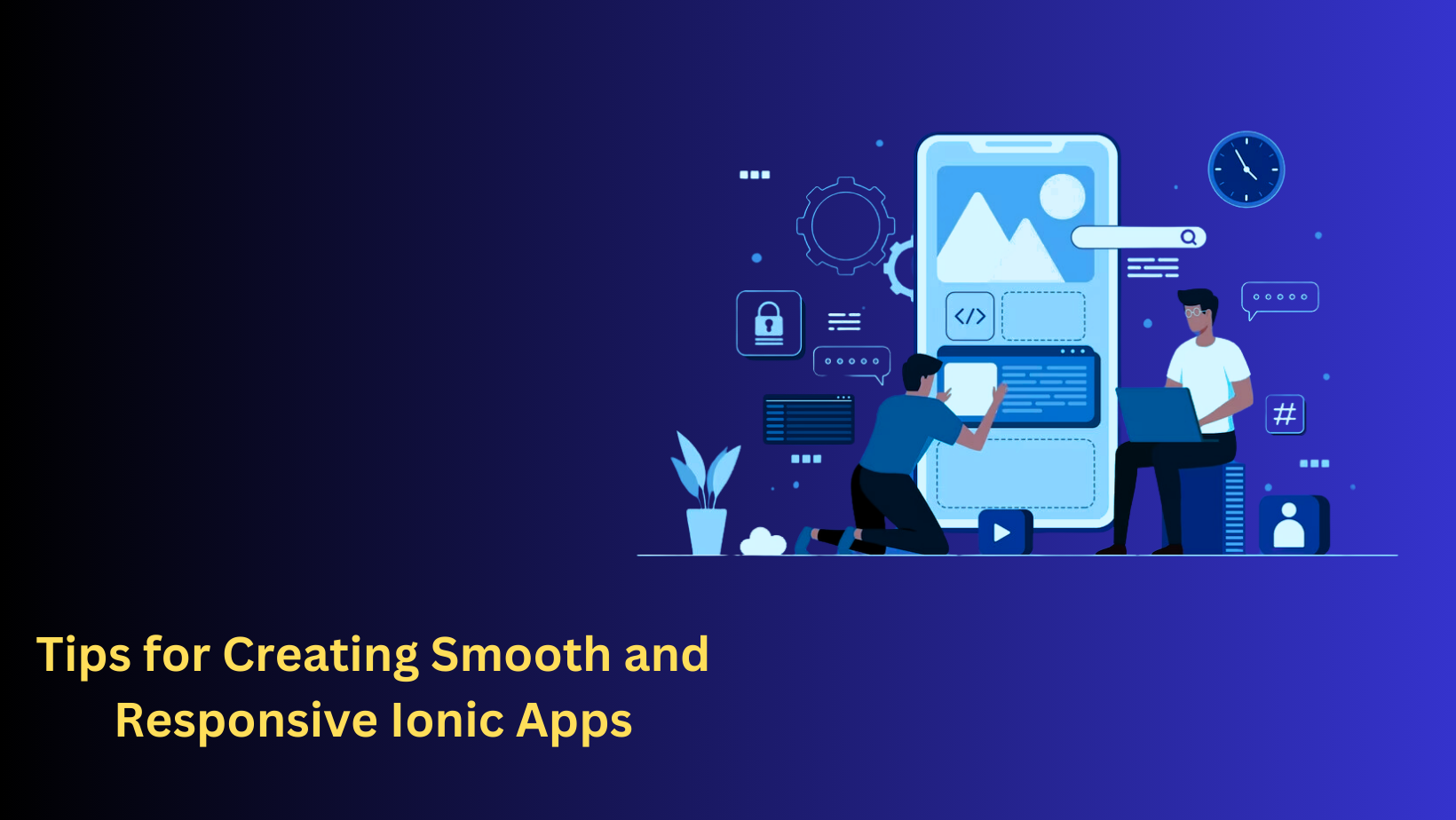Ionic is a cross-platform mobile app development framework that allows you to build native-looking apps for iOS, Android, and web browsers using familiar web technologies like HTML, CSS, and JavaScript.
Key Features:
- Write once, run anywhere: Develop your app once and deploy it seamlessly across multiple platforms, saving time and resources.
- Web technologies: Leverage your existing web development skills and familiar tools to create mobile apps.
- Native performance: Utilize platform-specific features and APIs for an authentic user experience on each platform.
- Rich ecosystem: Benefit from a large community, extensive libraries, and plugins for various functionalities.
- Rapid prototyping: Quickly build and test app ideas with Ionic’s hot reload feature and pre-built UI components.
Tips to Create Responsive Ionic Applications:
- Optimize Performance from the Start:
- Begin by optimizing your app’s performance right from the start of the development process.
- Minimize unnecessary animations and transitions that can slow down the app.
- Use lazy loading to load only the necessary components when needed, reducing initial load times.
- Use Ionic Components Wisely:
- Leverage Ionic’s built-in components and UI elements to streamline development and ensure platform consistency.
- Choose lightweight components whenever possible to minimize memory usage and improve performance.
- Customize Ionic components to match your app’s branding and design guidelines for a polished look and feel.
- Implement Efficient Data Handling:
- Efficiently handle data fetching, storage, and manipulation to prevent performance bottlenecks.
- Use observables and asynchronous programming techniques to manage data streams effectively.
- Cache data locally whenever possible to reduce network requests and improve app responsiveness.
- Opt for Virtual Scroll:
- Virtual scrolling is a powerful feature in Ionic for efficiently rendering large lists or grids of data.
- Implement virtual scroll to dynamically load and render only the visible items on the screen, improving performance and reducing memory consumption.
- Fine-Tune Animations and Transitions:
- Smooth animations and transitions can enhance the user experience but should be used judiciously.
- Optimize animations for performance by using CSS animations or Ionic’s built-in animation utilities.
- Test animations on different devices and screen sizes to ensure consistent platform performance.
- Test on Real Devices:
- Testing your Ionic app on real devices is crucial for identifying performance issues and ensuring compatibility.
- Use device testing labs or cloud-based testing services to test your app on various devices and operating systems.
- During testing, pay attention to performance metrics such as load times, frame rates, and memory usage.
- Monitor and Analyze Performance:
- Implement real-time performance monitoring tools and analytics to track your app’s performance.
- Use tools like Google PageSpeed Insights or Lighthouse to analyze and optimize your app’s performance metrics.
- Regularly monitor performance metrics and user feedback to identify areas for improvement and optimization.
Conclusion:
Making smooth and responsive Ionic apps requires careful planning and attention to detail. By following the tips and best practices we discussed in this blog, you can make mobile apps that work well and give users a great experience no matter what device they’re using. Remember to focus on making your app run smoothly right from the beginning, use Ionic’s parts smartly, and keep an eye on how your app is doing so you can fix any issues quickly. With these strategies, you can make Ionic apps that are super fast, easy to use, and loved by users.



